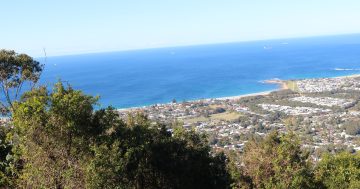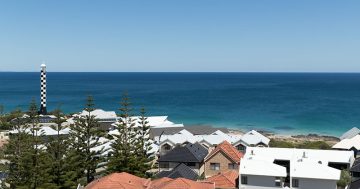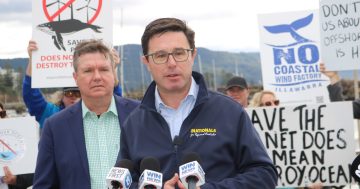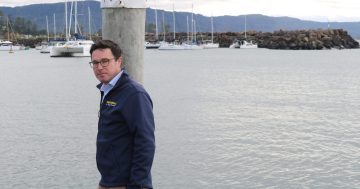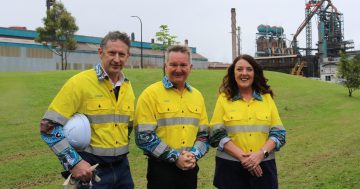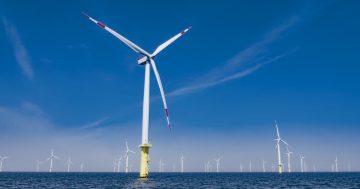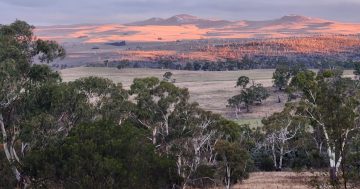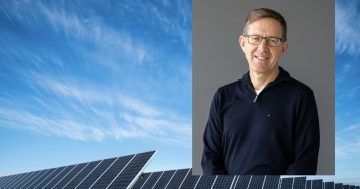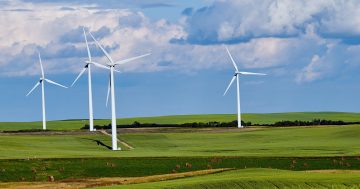
Is the Illawarra an ideal location for offshore wind? Photo: Lakeland-Photos.
Public submissions on the proposal for a renewable energy zone off the Illawarra’s coast will close on Wednesday, 15 November. Region Illawarra asked The University of Wollongong’s Blue Energy’s Lab to explain why it is supporting the proposal, and the Coalition Against Offshore Energy the reasons why it should be rejected. This is the first in the two-part series.
Our world is facing a climate crisis, and urgent action is required to mitigate its effects.
A rapid transition towards decarbonisation is imperative, and offshore wind presents an extraordinary opportunity for the Illawarra to lead the charge.
Offshore wind’s appeal lies in its colossal energy production capacity. A single 100-turbine project can generate a staggering 1.5-2 GW of energy. To put that in perspective, two such wind farms would eclipse the output of Eraring, Australia’s largest coal-fired power station, which has a capacity of 2.88 GW.
It’s a game-changer. Further, offshore wind allows energy to be produced close to where it is used in homes, businesses and industry, avoiding the need for high-capacity electricity lines to be constructed over vast distances.
As we transition away from coal, energy security becomes a pressing concern. Offshore wind is the most reliable and efficient renewable energy source under consideration in Australia.
Reliability is critical as we decarbonise industries such as steelmaking, which demands a substantial increase in energy production.
The Illawarra possesses ideal attributes for offshore wind: strong winds, a deep-water port, existing transport and transmission infrastructure, and a skilled workforce.
Co-locating offshore wind with the green hydrogen production sprouting up here offers a holistic approach to decarbonising heavy industry, notably steel production.
The Blue Energy Futures Lab at the University of Wollongong has brought together researchers from diverse disciplines to provide recommendations about the role the Illawarra can play in Australia’s transition to renewable energy through offshore wind.
Any development of offshore wind in the region needs to be built on a foundation of independent, rigorous research and must meet the highest environmental, social, and cultural standards.
In our submission to the Australian Government, we outlined recommendations for how that might occur. Our key findings can be found on the Blue Energy Futures Lab website.
How will marine life be impacted by offshore wind?
Any offshore wind development must strike a balance between energy needs and environmental stewardship.
Large-scale infrastructure in our oceans will have consequences on marine life, however, extensive studies have unveiled a nuanced picture of both positive and negative impacts on marine ecosystems.
Positive effects include the turbines acting as artificial reefs, attracting marine life and potentially offsetting biodiversity loss. They also can act as fish aggregating devices, as well as refuges and resting spots for seabirds.
Any adverse effects must be considered in the context of the broader consequences of climate change inaction. Climate change is the single biggest threat to our oceans and the planet as a whole. Offshore wind plays a crucial role in addressing this crisis.
Instead of rejecting offshore wind on environmental grounds, we need to investigate these potential effects carefully and prioritise mechanisms to minimise negative impacts.
For example, while the construction phase of offshore wind may result in noise and related negative effects on marine life, these can be minimised through the use of “bubble curtains”, timing construction outside of migration times and employing the least noisy construction methods.
Similarly, models have been developed to help design wind farms that avoid or mitigate collision impacts on migratory birds once the turbines are in operation.
Concerns have also been expressed about the impact on whale species. We need to prioritise rigorous, independent research to better understand the migratory pathways of whales and how offshore wind farms might be designed to avoid or minimise interruptions to those pathways.
In Queensland, a study found the majority of whales hug the coastline during their journey past the study location, passing within 5 km of the shore. If the same trends are found here this would mean most whales won’t pass through the proposed zone, as it begins 10 km from the shore.
What will the Illawarra get out of this?
It’s tempting to focus on what we will lose if offshore wind proceeds in the Illawarra. But there will also be significant losses from inaction.
Climate change has been identified as a priority threat to the environmental, social, cultural and economic benefits we receive from our coasts and oceans, including food, income and enjoyment.
That doesn’t mean that we should accept this without question. As a community, it’s up to us to decide how these effects are traded off for longer-term benefits.
There is significant scope to negotiate agreements with offshore wind developers that spread the benefits among the community as a whole. This is the conversation we need to have as a region to ensure the renewable energy transition is fair and inclusive.
We need clean energy solutions, but we also need to approach this new industry with responsibility and care.
Offshore wind can be a vital piece of the energy transition puzzle if we find the balance between powering our future and protecting our precious ecosystems.
This needs to be done in partnership with First Nations communities, as a matter of justice and to safeguard cultural heritage.
The Illawarra can be a shining example of how we can harmonise our energy needs with our duty as stewards of the environment.
Public consultation on the Illawarra proposal is now open. Submissions can be made by visiting the website.
Original Article published by Michelle Voyer on Region Illawarra.


